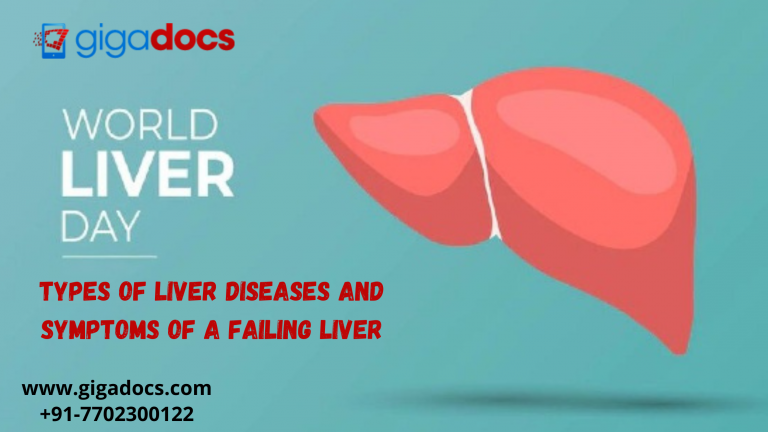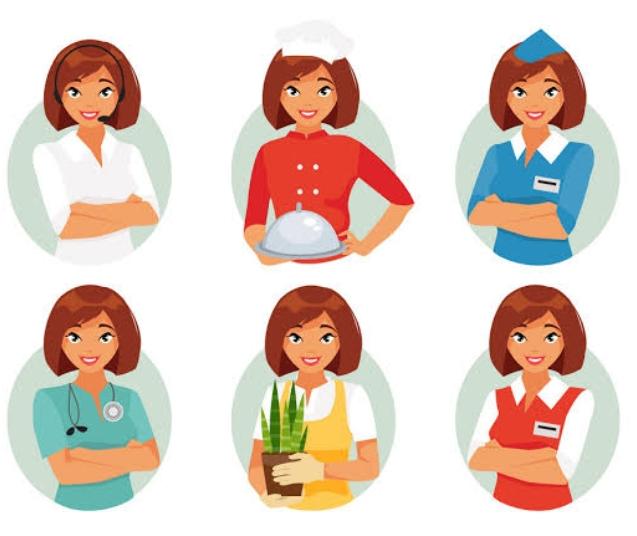Your liver is the second-largest organ in your body (after the skin). It is about the size of a football and sits just under your ribcage on the right side. As nutrients and waste pass through your digestive system, the liver separates them. It also produces bile, a substance that helps digestion and transports toxins out of the body.
“Liver disease” refers to a group of conditions that can affect and harm your liver. Hepatitis may be the result of drugs or excessive alcohol consumption. Long-term injury or scar tissue in the liver causes Cirrhosis, whose symptoms include jaundice or skin yellowing. If left untreated, liver disease can progress to liver failure and cancer. This World Liver Day, let’s know more about your liver and the diseases which affect your liver-
Symptoms of a Failing Liver
Liver disease does not always emerge as visible signs and symptoms. Early symptoms of liver disease may include:
- Chronic exhaustion.
- Vomiting or nausea.
- Skin itch.
- Dark urine while pale stool color.
- Appetite loss.
- Tendencies of easy bruises.
- Jaundice (Yellowish-colored skin and eyes).
- Pain and swelling in the abdomen.
- Leg and ankle swelling.
Types of Liver Diseases
An infection that inflames your liver is sometimes the source of the problem. The most common cause is viral hepatitis, which includes:
- Hepatitis A –Most people get it from eating or drinking something contaminated with feces. You may not be experiencing any symptoms. It usually goes away on its own after six months with no long-term consequences.
- Hepatitis B –You contract Hepatitis B from someone else through unprotected sex or drug use with shared needles. Being unwell for more than six months increases your risk of developing liver cancer or other diseases.
- Hepatitis C- When infected blood enters your body, it brings Hepatitis C along. You could get it if you use drugs with shared needles or if you have HIV. If you work in healthcare, you could contract it accidentally. Symptoms may not appear for several years. Baby boomers (those born from 1946 to 1964) are at risk for hepatitis C and should undergo tests for it.
- Autoimmune hepatitis- This type of hepatitis causes liver inflammation and can lead to other issues, such as liver failure. It affects more girls and women than boys or men.
- Primary biliary cholangitis- Affects the bile ducts, which are tiny tubes in your liver. They transport bile, a chemical that aids digestion. When the ducts are damaged, bile accumulates inside your liver and scars it. Primary biliary cholangitis affects women more frequently than men.
- Primary sclerosing cholangitis- Primary sclerosing cholangitis scars your bile ducts, eventually causing them to block. Bile builds up inside your liver, making it work harder. It can cause liver cancer and necessitate a liver transplant. Men are more likely to contract it than women.
- Liver Cancer- Women are more likely to develop liver cancer than men, and African Americans are more likely to develop it than whites. Your doctor may refer to it as hepatocellular carcinoma. It is more likely if you have hepatitis or drink excessively.
- Bile duct cancer- Affects the tubes that carry bile from your liver to your small intestine. Bile is a fluid that aids digestion. This type of cancer primarily affects people over 50, but it is uncommon.
- Liver cell adenoma- A liver cell adenoma is a benign tumor that does not cause cancer. It’s uncommon, but women who have used birth control pills for a long time are more likely to develop it than others. There is a small chance that the tumor will develop into cancer.
- Hemochromatosis- Hemochromatosis causes the body to store excessive iron from your diet; this extra iron accumulates in your liver, heart, and other organs. It can result in potentially fatal liver disease, heart disease, or diabetes.
- Hyperoxaluria- Hyperoxaluria occurs when your urine contains an excessive amount of the chemical oxalate. Because of a genetic mutation, your liver produces insufficient oxalate in this condition. This can result in kidney stones as well as kidney failure.
- Wilson’s disease- Wilson’s disease leads to a buildup of copper in your liver and other organs. Its first symptoms usually appear between 6 and 35, most often in adolescence. It not only harms your liver, but it can also cause nerve and psychiatric issues.
What Causes Different Types of Liver Disease?
Various factors cause different types of liver disease. Liver disease can be caused by:
- Viral infections: Hepatitis A, B, and C are viral infections that cause diseases.
- Immune system issues: Autoimmune liver diseases can occur when your immune system mistakenly attacks your liver. Primary biliary cholangitis and autoimmune hepatitis are two examples.
- Inherited diseases: Some liver problems arise from a genetic condition (the one you inherit from your parents). Wilson disease and hemochromatosis are two inherited liver diseases.
- Cancer: Cancer can develop when abnormal cells multiply in your liver. These tumors can be benign (noncancerous) or malignant (cancerous) (liver cancer).
- Toxin overload: Excessive alcohol consumption leads to Nonalcoholic fatty liver disease (NAFLD). NAFLD is becoming more common as obesity and diabetes rates rise.
What are the signs and symptoms of liver disease?
Some types of liver disease, such as nonalcoholic fatty liver disease, produce few symptoms. The most common symptom of other conditions is jaundice, a yellowing of your skin, and the whites of your eyes. Jaundice occurs when your liver cannot eliminate a substance known as bilirubin.
- Abdominal (belly) pain is another sign of liver disease (especially on the right side).
- Color changes in your urine or stool.
- Fatigue.
- Vomiting or nausea.
- Swelling is seen in the arms or legs (edema).
What are the consequences of liver disease?
Some types of liver disease can raise your chances of getting liver cancer. Others, if untreated, will continue to harm your liver—cirrhosis (scarring) forms. A damaged liver will eventually lack enough healthy tissue to function. Untreated liver disease can eventually lead to liver failure.
How is a Liver Disease Identified?
Your provider will recommend one or more tests to accurately diagnose and determine the cause of liver disease.
- Liver enzyme tests measure the levels of liver enzymes in your blood. Another type of liver function test is the international normalized ratio, which measures blood clotting (INR). Abnormal levels may indicate liver function issues.
- Your provider can use ultrasound, MRI, or CT scans to look for signs of damage, scarring, or tumors in your liver. A fibro-scan is a specialized type of ultrasound that can determine the liver’s degree of scarring and fat deposition.
- Your provider will use a thin needle to extract a small sample of liver tissue during a liver biopsy. They examine the tissue for signs of liver disease.
Is it possible to avoid liver disease?
Some types of liver disease can be avoided, particularly those caused by your diet and lifestyle. If you are at risk for liver disease, your doctor may advise you to make the following lifestyle changes:
- Avoid or limit your alcohol consumption
- Say no to trans fats and high-fructose corn syrup in foods and beverages.
- Carefully monitor your prescription and over-the-counter medication intake.
- Exercise regularly.
- Limit red meat consumption.
Many people with liver disease can avoid severe liver damage and failure with early treatment and lifestyle changes.
Liver health with Gigadocs
Healthcare providers can effectively treat liver disease through medication or lifestyle changes. Reach out to Hepatologists and Gastroenterologists on the Gigadocs app if you notice-
- A change in the color of your urine or stool.
- Yellowing of the eyes (Also known as jaundice).
- Pain on the upper right side of your abdomen.
- Swelling of the arms or legs.
Gigadocs is committed to providing you with the best healthcare services. Download the Gigadocs App from-
- IOS App – apple.co/2W2iG4V
- Android App – bit.ly/33AQoR




